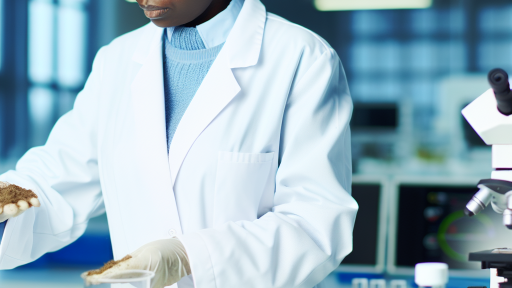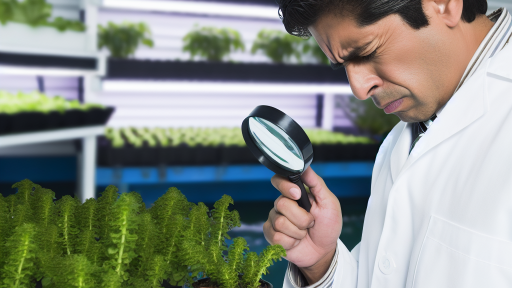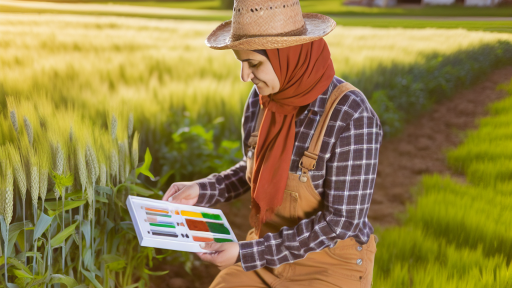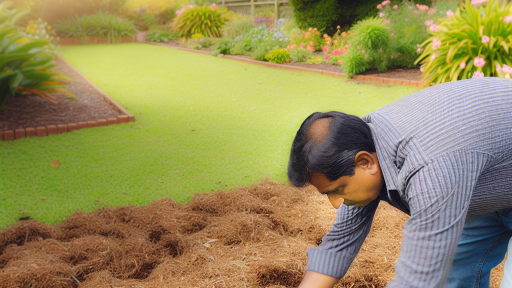Introduction to Hydroponics and the Role of Light
Understanding Hydroponics
Hydroponics is a method of growing plants without soil.
This innovative system uses nutrient-rich water instead.
It allows for precise control over growing conditions.
As a result, plants often grow faster and healthier.
Furthermore, hydroponics conserves water compared to traditional farming.
The Importance of Light in Plant Growth
Light is essential for photosynthesis in plants.
During this process, plants convert light energy into food.
This energy is critical for growth and development.
Consequently, proper lighting is vital for hydroponic systems.
Types of Light Used in Hydroponics
Several types of light can be used for hydroponic growth.
LED lights are popular due to their energy efficiency.
Fluorescent lights are also commonly used for seedlings and early growth.
High-intensity discharge (HID) lights provide robust illumination as well.
Each type of light has its advantages and disadvantages.
Choosing the Right Light for Your Setup
When selecting lights, consider the specific needs of your plants.
Transform Your Agribusiness
Unlock your farm's potential with expert advice tailored to your needs. Get actionable steps that drive real results.
Get StartedDifferent plants require varying light intensities and spectrums.
Additionally, the size of your growing space impacts your choice.
Ensure you provide light for the recommended number of hours daily.
Optimizing Light Conditions
To optimize growth, monitor the distance between plants and lights.
Adjust the height of lights based on plant growth stages.
Moreover, consider using reflectors to maximize light distribution.
Regularly check and replace bulbs as needed to maintain efficiency.
Understanding Light Spectrum and Plant Growth Requirements
The Importance of Light for Plants
Light serves as a primary energy source for plants.
It drives the process of photosynthesis.
Plants convert light energy into chemical energy.
This process sustains their growth and development.
Types of Light Spectrums
Plants require different wavelengths of light for various processes.
Most importantly, red and blue light play crucial roles.
Red light influences flowering and fruiting.
Meanwhile, blue light supports vegetative growth.
Light Intensity and Duration
Light intensity significantly affects plant growth rates.
Higher light intensity can enhance photosynthesis.
However, too much light may lead to stress or damage.
Moreover, light duration impacts flowering cycles.
Plants generally benefit from 12 to 16 hours of light daily.
Artificial Lighting Solutions
Grow lights provide an excellent alternative for indoor gardening.
LED lights are increasingly popular due to their efficiency.
They produce less heat compared to traditional lights.
This quality prevents overheating in enclosed environments.
Showcase Your Farming Business
Publish your professional farming services profile on our blog for a one-time fee of $200 and reach a dedicated audience of farmers and agribusiness owners.
Publish Your ProfileConsidering Environmental Factors
Humidity levels can affect how plants absorb light.
Additionally, temperature influences their metabolic processes.
Consequently, maintaining optimal growth conditions is essential.
Using a combination of light types can enhance growth results.
Types of Grow Lights
LED Grow Lights
LED grow lights are highly efficient for hydroponic systems.
They produce less heat compared to other light sources.
These lights are available in various spectrums for plant growth.
They can easily be adjusted to specific growth stages.
LEDs consume less energy, leading to lower electricity costs.
HPS Grow Lights
High-pressure sodium (HPS) lights are popular among growers.
They provide a yellow-orange light, ideal for flowering plants.
HPS lights generate significant heat during operation.
Using HPS requires careful temperature management.
They are less energy-efficient compared to LEDs.
CFL Grow Lights
Compact fluorescent lights (CFL) are another option for growers.
CFLs are compact and fit into tight spaces easily.
They are available in different color temperatures.
These lights are perfect for beginners due to their affordability.
CFLs emit less heat, reducing the risk of burning plants.
Other Types of Grow Lights
There are additional light sources like incandescent and fluorescent tubes.
Incandescent lights are efficient for small plants.
However, they consume more energy and emit a lot of heat.
Fluorescent tubes offer good coverage for larger areas.
They typically have a shorter lifespan than other options.
Choosing the Right Grow Light
Selecting the ideal grow light depends on various factors.
Consider the type of plants you want to grow.
Also, evaluate the space and budget available.
Ultimately, the right lighting enhances growth and yields.
Delve into the Subject: Scaling Up Your Aquaponics Business
Optimal Light Intensity for Hydroponic Systems
Understanding Light Requirements
Plants require specific light intensities for optimal growth.
Hydroponic systems depend on artificial lighting in many setups.
Understanding your plants’ needs is critical for successful growth.
Factors Affecting Light Intensity
Different plant species have unique light intensity needs.
For example, leafy greens thrive in lower light compared to fruiting plants.
Furthermore, growth stages also influence light requirements.
Seedlings typically need less light than mature plants.
Choosing the Right Light Source
Selecting the appropriate light source is vital for hydroponic growth.
LED lights are popular due to their efficiency and versatility.
Other sources, like fluorescent and HID lights, also provide benefits.
Each type of light has its optimal intensity range for plant growth.
Showcase Your Farming Business
Publish your professional farming services profile on our blog for a one-time fee of $200 and reach a dedicated audience of farmers and agribusiness owners.
Publish Your ProfileDetermining Optimal Light Intensity
Measuring light intensity accurately is essential for success.
Light meters can help determine the intensity levels in your setup.
Generally, leafy greens prefer 200 to 400 µmol/m²/s of light.
Conversely, fruiting plants such as tomatoes need 600 to 900 µmol/m²/s.
Monitoring and Adjusting Light Levels
Regularly monitor light levels to ensure optimal growth conditions.
Adjust the distance of light sources to modify intensity.
Additionally, consider using timers for consistency in lighting schedules.
Effective Light Management for Hydroponic Success
Consistent light management helps optimize yield in hydroponic systems.
Understanding the unique needs of each plant species is key.
By tailoring light conditions, you can achieve successful hydroponic growth.
Gain More Insights: Innovative Approaches To Pest Forecasting For Farmers
Photoperiod: How Light Duration Affects Plant Development
Understanding Photoperiod
Photoperiod refers to the duration of light exposure plants receive each day.
This duration plays a crucial role in plant development.
Plants utilize light cues to regulate various growth processes.
Light Duration and Plant Growth Stages
Different plants respond uniquely to light duration.
Some species thrive with extended light periods.
Others require shorter days to trigger specific growth stages.
Seed Germination
Light duration can influence seed germination rates.
Some seeds germinate faster with more light exposure.
Conversely, other seeds may need darkness to sprout properly.
Vegetative Growth
During vegetative growth, plants develop their leaves and stems.
Consistent light encourages robust vegetative growth.
Inadequate light duration can lead to weak, leggy plants.
Flowering and Fruiting
Light duration directly impacts flowering time in many plants.
Long days can promote flowering in short-day plants.
On the other hand, short days often trigger flowering in long-day species.
Strategies for Optimal Light Management
Understanding plant needs helps optimize growth conditions.
Adjust lighting to match specific growth stages of plants.
This approach fosters healthy, productive plants.
Using Grow Lights
Grow lights can supplement natural light effectively.
Choose full-spectrum lights that mimic sunlight closely.
Adjust the duration based on the plant’s growth stage.
Monitoring and Adjusting
Regularly monitor plant responses to light changes.
Be prepared to adjust light durations as needed.
This ensures optimal growth and health for the plants.
See Related Content: How to Start an Organic Crop Farm: A Beginner’s Guide
The Importance of Light Reflectors and Placement
Understanding Light Reflectors
Light reflectors enhance light exposure in hydroponic systems.
They maximize the efficiency of artificial lighting setups.
By directing light towards plants, reflectors improve overall growth.
Common materials for reflectors include aluminum and mirrored surfaces.
Showcase Your Farming Business
Publish your professional farming services profile on our blog for a one-time fee of $200 and reach a dedicated audience of farmers and agribusiness owners.
Publish Your ProfileAluminum is lightweight and cost-effective, making it a popular choice.
Mirrored surfaces provide superior reflectivity but can be more expensive.
Ideal Placement of Reflectors
Proper positioning of reflectors is crucial for optimizing plant growth.
Reflectors should be placed above plants, angled to distribute light evenly.
Adjusting the angle can significantly affect light intensity on the plants.
Additionally, ensure reflectors do not block airflow in the growing space.
Maintain a distance of 12 to 24 inches between reflectors and plants.
Benefits of Using Reflectors
Using reflectors can lead to faster plant growth.
They help in achieving higher yields for hydroponic crops.
Reflectors also reduce energy consumption by increasing light efficiency.
This can result in lower operational costs for growers.
Common Mistakes to Avoid
One common mistake is using flat reflectors that do not capture light effectively.
Another mistake is improper positioning that leads to uneven light distribution.
Additionally, neglecting to clean reflectors can reduce their effectiveness.
Regular maintenance ensures optimal light reflection and plant health.
Ensuring Success with Reflectors
Evaluate your hydroponic setup to determine reflector needs.
Consider factors such as plant type and growth stage.
Implementing effective light reflector strategies can enhance overall success.
Uncover the Details: Early Detection Methods For Crop Disease Forecasting
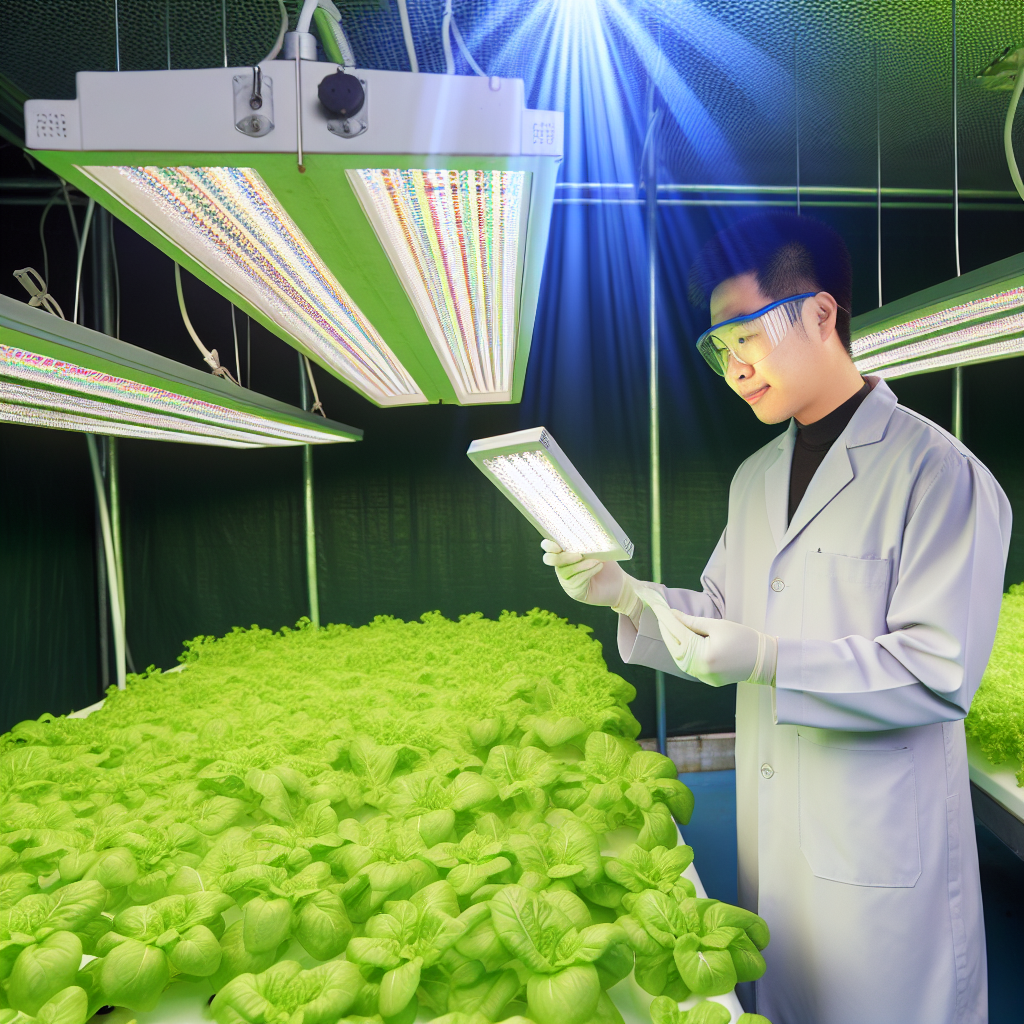
Techniques for Measuring Light Levels in Hydroponic Systems
Understanding Light Measurement
Measuring light levels is essential for successful hydroponic growth.
Plants rely on light for photosynthesis and overall health.
Accurate light measurement helps growers optimize plant development.
Using Light Meters
Light meters are vital tools for measuring light intensity.
These devices provide precise readings, ensuring the right conditions.
Growers should choose quality light meters for reliable results.
Consider models that measure different light types, like PAR.
Evaluating Light Quality
Light quality depends on its spectrum and intensity.
A full-spectrum light source supports healthy plant growth.
Use spectrometers to analyze light quality effectively.
These tools help identify the best light wavelengths for plants.
Using Data Loggers
Data loggers track light levels over time.
They allow growers to analyze trends in light exposure.
This information assists in adjusting light conditions accordingly.
Opt for loggers that can integrate with other environmental controls.
Visual Observation Techniques
Visual assessment of plant growth can indicate light issues.
Yellowing leaves may signal insufficient light levels.
Dark green leaves can indicate excess light or nutrients.
Regular inspections complement other light measurement techniques.
Implementing Light Level Adjustments
After measuring light levels, make necessary adjustments.
Increase intensity using stronger light sources when necessary.
Showcase Your Farming Business
Publish your professional farming services profile on our blog for a one-time fee of $200 and reach a dedicated audience of farmers and agribusiness owners.
Publish Your ProfileAlternatively, reduce light exposure to prevent stress on plants.
Consistent adjustments help maintain optimal growth conditions.
Adjusting Light for Different Growth Stages
Seedlings Stage
During the seedlings stage, light is crucial for growth.
Provide 16 to 18 hours of light each day.
Use fluorescent or LED grow lights to achieve optimal results.
These light types are energy-efficient and effective.
Avoid placing lights too close to seedlings.
Maintain a distance of about 12 to 24 inches.
This distance prevents the risk of light burn.
Vegetative Stage
As plants enter the vegetative stage, they require more intense light.
Increase the light intensity to promote robust growth.
Use a light schedule of 14 to 18 hours per day.
During this phase, cannabis plants thrive under high-output LED lights.
These lights provide the necessary spectrum for optimal health.
Regularly adjust the height of the lights.
This adjustment is vital as plants grow taller.
Flowering Stage
The flowering stage demands specific light conditions.
Switch to a 12-hour light cycle to induce flowering.
Use full-spectrum lights that cater to flowering plants.
These lights enhance bud development and overall yield.
Reducing light duration triggers the blooming process.
Monitor your plants closely during this critical period.
This vigilance ensures you meet their evolving light needs.
Harvest Stage
As plants approach the harvest stage, light adjustments are minimal.
Keep the light intensity at a consistent level.
This consistency promotes the final growth qualities of the plants.
Pay attention to trichome development for the perfect harvest timing.
Use this stage to prepare for optimal conditions leading to harvesting.
Finally, ensure proper ventilation and light exposure during this phase.
These factors contribute significantly to plant health prior to harvest.
Common Mistakes in Light Optimization and How to Avoid Them
Ignoring Plant Light Requirements
Different plants require varying amounts of light.
Neglecting these needs can stunt their growth.
First, research the specific light requirements of your plants.
Next, adjust the light intensity accordingly.
Finally, monitor their growth and adjust as needed.
Using Inappropriate Light Spectrum
Not all light is created equal.
Plants thrive under specific light spectrums.
For example, blue light promotes vegetative growth.
Conversely, red light supports flowering and fruiting.
To maximize growth, ensure you are using the correct spectrum.
Showcase Your Farming Business
Publish your professional farming services profile on our blog for a one-time fee of $200 and reach a dedicated audience of farmers and agribusiness owners.
Publish Your ProfilePoor Light Placement
The placement of your grow lights significantly impacts plant performance.
Placing lights too high can reduce light intensity.
On the other hand, placing them too close can cause heat stress.
Therefore, aim for an optimal distance from the plants.
Regularly assess light coverage to ensure even distribution.
Neglecting Light Duration
Inconsistent light duration creates confusion for plants.
Most plants require a set number of hours for optimal growth.
Too little light can hinder photosynthesis.
Meanwhile, excessively long periods can induce stress.
Utilize timers to standardize light cycles for your plants.
Overlooking Special Needs During Different Growth Stages
Each growth stage demands different light conditions.
Seedlings require softer light compared to fully grown plants.
As plants mature, gradually increase light intensity.
Be mindful of adjusting the light setup as they grow.
In doing so, you will support healthy, vibrant plant life.
Additional Resources
NASA Research Launches a New Generation of Indoor Farming …
Optimizing growth conditions in vertical farming: enhancing lettuce …

